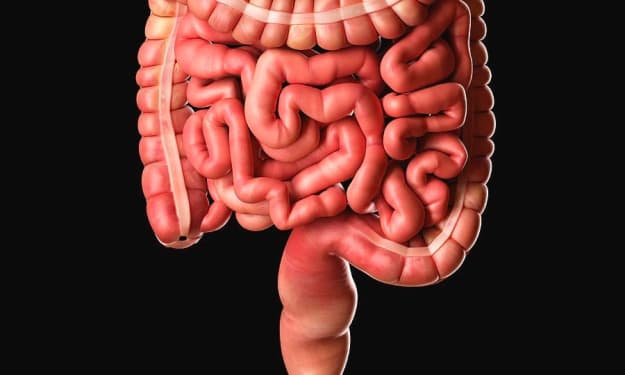"The Marvel of Voluntary Goosebumps: Unraveling the Intriguing Phenomenon".
The fact that Some People Can Give Themselves Goosebumps.

Introduction:
The sensation of goosebumps, scientifically known as piloerection or piloerector reflex, is a common response to various stimuli such as cold temperatures, strong emotions, or even thrilling music. However, a select group of individuals possesses the unique ability to induce goosebumps voluntarily, defying the usual triggers. In this article, we explore the fascinating phenomenon of people who can intentionally give themselves goosebumps, shedding light on the underlying mechanisms and the potential psychological and physiological implications.
The Physiology of Goosebumps:
Before delving into the voluntary induction of goosebumps, it's crucial to understand the normal physiological process behind this phenomenon. Goosebumps occur when tiny muscles called arrector pili contract, causing the hair follicles to stand upright. This response is thought to be a vestigial reflex, reminiscent of the piloerector reflex observed in animals under stress or facing threatening situations. In humans, it is often associated with the fight-or-flight response.
Common Triggers for Goosebumps:
Cold Temperature: Exposure to cold environments prompts the body to generate heat, causing the arrector pili muscles to contract and create goosebumps.
Emotional Responses: Strong emotions, whether fear, excitement, or nostalgia, can trigger the release of adrenaline, leading to piloerection as part of the body's response to heightened arousal.
Music or Aesthetically Moving Stimuli: Certain pieces of music, awe-inspiring sights, or emotionally charged stimuli can evoke goosebumps in some individuals, showcasing the link between emotional experiences and the piloerection reflex.
The Voluntary Goosebump Phenomenon:
While most people experience goosebumps involuntarily in response to external stimuli, there is a subset of individuals who possess the unique ability to induce the sensation at will. This voluntary control over the piloerection reflex is an intriguing phenomenon that has garnered attention in scientific and anecdotal discussions.
Psychological Aspects:
The ability to induce goosebumps voluntarily is often associated with a heightened sense of body awareness and control. Individuals with this capability may have a heightened sensitivity to their own emotional states, allowing them to intentionally evoke the physiological response associated with emotional arousal.
Voluntarily inducing goosebumps may also have psychological implications, potentially serving as a form of self-regulation or a coping mechanism. Some individuals report using this ability to enhance focus, relieve stress, or amplify positive emotions.
Physiological Mechanisms:
While the exact physiological mechanisms enabling voluntary goosebumps are not fully understood, it is believed that individuals who can evoke this response may have a heightened connection between their autonomic nervous system and their conscious control. The autonomic nervous system typically governs involuntary bodily functions, including the piloerection reflex. The ability to override this reflex voluntarily suggests a unique interplay between conscious and autonomic processes.
Individual Variations:
Not everyone can voluntarily induce goosebumps, and the ability appears to vary among individuals. It is unclear whether this capacity is innate or can be developed through practice and heightened self-awareness. Research into this phenomenon is limited, and further exploration is needed to elucidate the underlying factors contributing to individual differences in the ability to induce goosebumps voluntarily.
Connection to Emotional Intensity:
Individuals who can give themselves goosebumps often report a connection between their emotional state and the efficacy of their ability. For some, the experience is most successful when linked to intense emotions or a vivid imagination. This correlation further underscores the intricate link between emotion, physiology, and the potential for conscious control over bodily responses.
Potential Applications and Implications:
While the voluntary induction of goosebumps may currently be more anecdotal than scientifically documented, there is speculation about potential applications and implications. Some individuals claim to use this ability as a form of self-soothing or to enhance their mental and emotional well-being. Understanding the mechanisms behind this phenomenon could have implications for stress management, emotional regulation, or even biofeedback techniques.
Conclusion:
The ability to induce goosebumps voluntarily is a captivating phenomenon that highlights the intricate interplay between the mind and the body. While the scientific understanding of this ability is still evolving, anecdotal reports and personal accounts shed light on the potential for conscious control over a reflex traditionally associated with involuntary responses.
As researchers delve deeper into the connections between emotions, the autonomic nervous system, and voluntary control, the voluntary induction of goosebumps may become a subject of broader scientific inquiry. Regardless of the scientific intricacies, the phenomenon remains a testament to the remarkable capacities of the human body and the fascinating ways in which individuals can tap into their own physiological responses for various purposes.





Comments (1)
I only have goosebumps when I'm too cold and when I see my favourite actor on screen hahaha!